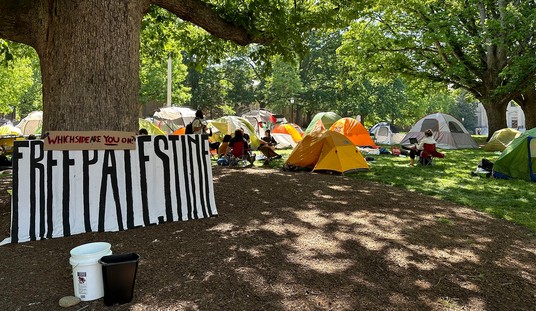Maybe we know more now about something that started 12 years go. That would be nice. The Institute for Science and International Security (ISIS), which follows the Iran nuclear problem closely, believes it has identified a building where IAEA has information that explosive tests have been conducted for a nuclear warhead detonator. ISIS issued a report on 13 March highlighting the building in imagery near the Parchin weapons facility southeast of Tehran.
An interesting aspect of the ISIS analysis is the fact that the building in question is located well outside the main area of the Parchin facility. Basically, it is in an area the ISIS analysts had apparently not reviewed before, at least not prior to the November 2011 IAEA report in which the Parchin building was featured as a suspect site. The building is between 4 and 5 kilometers northeast of the Parchin main installation, at the edge of a seasonal riverbed across from a small village.

The ISIS report suggests the analysts’ approach was to look for a site with the features provided in the November 2011 IAEA report: a building with its own perimeter fence and a berm between it and the adjacent building. That’s how they came up with the site in the report. They may be right that this is the building IAEA wants to inspect. An additional feature of this particular building is that it lies at the north end of a two-lane, paved north-south road. Vehicle traffic can only approach it from one direction, a common feature of high-security sites the world over.
On the other hand, it is a serious question why this building hasn’t been visited before. Was it actually not identified by authorities until recently? We could throw confetti at the new ISIS report, but we should gain a little perspective first. Some of the important facts are included in the ISIS report: IAEA’s information (in the November 2011 report) is that the explosive testing done in this building occurred in the early 2000s, and that the building houses a test chamber (described as being the size of a double-decker bus) that was put in place in 2000. The information, in other words, is not about a new development.
And we have to go elsewhere for other pieces of the puzzle. When we put everything together, the central question we end up with is this one: when IAEA last visited the Parchin installation in 2005, why did its team not inspect this building?
It wasn’t because there was no input from national intelligence agencies. In fact, a key reason IAEA visited Parchin in 2005 was that the United States had forwarded evidence in 2004 of high-explosive testing for a nuclear weapon at Parchin. In a September 2004 analysis done because of the aggregate reporting at that time, ISIS cited AFP stating that IAEA already regarded Parchin as a suspect site. The ISIS summary indicated that the agency had independent sources of information on the site.
IAEA identified four areas of interest at the installation, according to its own documents. There is no public information on where those four areas were. But IAEA was allowed to visit no more than two areas, in two separate visits in 2005 (the reports from 2005 are here and here). According to IAEA, the January inspection team was given its choice of one of the four areas. The January 2005 visit was described as including five buildings, which means that it was not a visit to the site of the building identified yesterday by ISIS. The earlier ISIS reporting suggests that the area visited in January 2005 was in the main part of the Parchin installation. The National Council of Resistance of Iran (NCRI) reported that the November 2005 visit was to a site for testing air-defense systems, unrelated to the nuclear program.
The bottom line is that US intelligence had information in 2004 that explosive tests had been conducted at Parchin in the early 2000s, and IAEA also regarded the site as suspect for its own reasons. The evidence suggests, however, that in two visits to Parchin in 2005, IAEA did not visit the site northeast of the main installation where ISIS now thinks the test building is located. If ISIS is right – and it’s still possible they’re not; there are a lot of nondescript buildings in the Greater Parchin area – this is the building that has been there since 2000 (a fact IAEA has established) and is also the building where explosive tests were conducted in the early 2000s (an intelligence report put forward by the US in 2004).
The most positive construction on the failure to visit the building in 2005 is that no one knew it was the site to visit. Perhaps that was the case. The US deduced that beryllium might have been used in the nuclear-detonator testing, but that kind of information does not depend on knowing exactly where tests have been conducted.
It appears that descriptive information about the building (i.e., the berm at one end, the dedicated perimeter security), while already available from unnamed national intelligence agencies, did not become significant to IAEA until the agency debriefed Vyacheslav Danilenko, the Russian scientist who is said to have assisted Iran in testing a nuclear detonator. Reporting on that aspect of the problem did not emerge until November 2011. (IAEA doesn’t name Danilenko in its report, but news outlets like Washington Post cite diplomats as identifying Danilenko. Danilenko denied he had had any connection with Iran’s nuclear program, stating that he understood his stint in Iran, which lasted from the mid-1990s to 2002, to be related to the explosive generation of nanodiamonds.)
Perhaps it shouldn’t strain credulity that IAEA had regarded Parchin as a suspect site prior to 2004, that the US knew of nuclear-related explosive testing there by 2004, and that IAEA visited two areas of Parchin in 2005, but it wasn’t until 2011 that anyone had enough information on the whole matter to identify the building with the berm.
It does, however. Meanwhile, one other matter requires clarification. News reporting last week seemed to suggest that IAEA had observed attempts to “clean up” an area of Parchin a very short time ago – at least, as the news customer would imagine, sometime in 2012. But the original reports about this activity were made in November 2011, shortly after that month’s IAEA report was issued. On 21 November, AP reported that national officials from several nations had discussed unusual activity at Parchin on 4-5 November, using exactly the same references to freight trucks and haulage vehicles found in the statements from last week.
Perhaps the more recent comments are about an ongoing effort to truck things out of Parchin, one stretching back to early November 2011 – an effort of truly prodigious proportions. It is more likely, however, that the reports from last week were about the observations from early November. That’s how the Iran problem generally rolls. Whatever “new” thing you hear, it’s probably something we knew about months or even years ago.
Hat tips/see also: Challah Hu Akbar, Elder of Ziyon, Israel Matzav
J.E. Dyer’s articles have appeared at The Green Room, Commentary’s “contentions,” Patheos, The Weekly Standard online, and her own blog, The Optimistic Conservative.
This post was promoted from GreenRoom to HotAir.com.
To see the comments on the original post, look here.








Join the conversation as a VIP Member